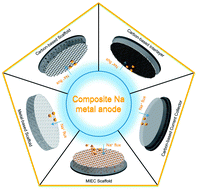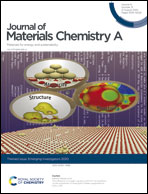Composite sodium metal anodes for practical applications
Abstract
With its high theoretical capacity (1165 mA h g−1), low reduction potential (−2.71 V vs. the standard hydrogen electrode) and abundant resources in the earth's crust, a Na anode exhibits great potential in grid-scale energy storage systems and extensive application of electric vehicles. Nevertheless, its practical application is still hindered by its dendrite-related hazards, together with severe side reactions and infinite volume change during plating/stripping processes. Among various strategies, constructing a composite sodium anode stands out in virtue of its unique role in mitigating volume fluctuation, lowering the current density and providing numerous nucleation sites for homogeneous Na+ plating. Herein, current progress in making a composite sodium metal anode is reviewed in terms of carbon-based scaffolds, carbon-based interlayers, carbon-based current collectors, metal-based scaffolds and mixed ion/electron-conducting scaffolds for practical applications. Finally, perspectives on its future development and important factors concerning its commercialization for high-energy-density sodium metal batteries are provided.

- This article is part of the themed collection: Journal of Materials Chemistry A Emerging Investigators


 Please wait while we load your content...
Please wait while we load your content...